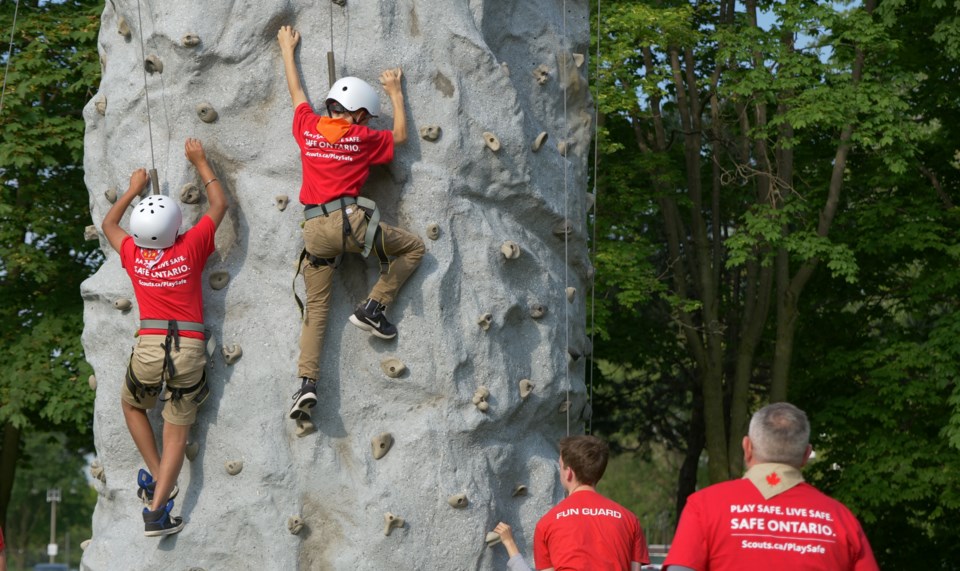NEWS RELEASE
SCOUTS CANADA
*************************
Summer is finally here, marking the end of school for millions of young people in Canada and the peak season for camping, cycling, paddling, rock climbing and many other sports and adventurous activities. While these activities are fun, it is important to prevent the possibility of injury for kids and adults alike by keeping head safety tips top of mind.
Did you know that some of the most common injuries are concussions? Concussions are an injury to the brain that affects the way a person feels, behaves and remembers. Symptoms from a concussion can impact daily life for weeks, months or even years. Despite how common the occurrence is, one in two Canadians have little or no knowledge about what a concussion is, and only 15 per cent of individuals can correctly identify the best treatments for it, according to the Government of Canada.
Recognizing the signs of head injuries and taking precautions to prevent them is essential to enjoying outdoor adventures. That’s why Scouts Canada and Hydro One, leaders in safety and prevention, have teamed up to inspire others to work safe, live safe and play safe. Through their new Head Safe program launching this fall, young people and their families will have access to tips on how to be Head Safe this summer in order to equip them with the knowledge to prevent and respond appropriately to head injuries.
How to stay 'Head Safe' this summer
Protect the head
The best way to prevent a head injury is to protect the head. To do this, always wear a properly fitted helmet that is appropriate for the activity. Helmets are not ‘one type fits all.’ The helmet used for cycling would not be as effective for rock climbing, and wearing a construction helmet while skiing just wouldn’t do the trick. Use the “2V1” rule when making sure a helmet fits correctly: two fingers above the eyebrows should meet the helmet edge, straps form a “V” under the ears, and one finger fits between the chin and strap. When in doubt, seek the assistance of a knowledgeable salesperson when selecting the helmet.
Promote awareness
Always pay attention to recognize hazards in the surrounding area to reduce the potential for accidents and injury.
Signs of a concussion
Following a blow to the head or neck, or any other jarring impact, the following symptoms could indicate a head injury or concussion: headache or pressure in the head; sensitivity to noise, light, motion or odors; drowsiness; nausea; dizziness; blurred vision; neck pain; feeling emotional, irritable, nervous or anxious; inability to concentrate; and difficulty remembering facts or events from earlier in the day.
What to do if a concussion is suspected
If a concussion is suspected, stop all activity and treat any swelling with ice, seeking medical advice immediately. A person with a suspected concussion shouldn’t be left alone and an ambulance should be called if they lose consciousness.
Return to play
The time it takes to recover from a head injury will vary. Returning to activities like Scouting, sports or work can be a slow process and should be done following Parachute Canada’s six steps to return to play, in conjunction with a doctor’s progressive plan to ease back into activities.
Step 1: No activity and complete rest.
Step 2: Once the symptoms are gone and a doctor provides clearance, take part in light aerobic exercise such as walking or stationary cycling for 10-15 minutes at a time.
Step 3: Increase aerobic movement with activities like hiking or jogging for 20-30 minutes at a time. Avoid activities that involve body contact, like team sports.
Step 4: Gradually return to low-key activities with no body contact or potential for head impacts (i.e. no dodgeball, soccer).
Step 5: Youth who have been cleared by a doctor can take part fully in regular activities but should be closely monitored during and after for symptoms.
Step 6: Full return to regular physical activities.
The rate of progression through these stages will vary per person according to their doctor, but each stage must take at least 24 hours. If any symptoms of a concussion reoccur during any of the steps, return to rest until they are gone and return to the previous stage of activity.
Prioritizing safety in all activities – whether it’s a day on the rock wall or a week long portage trip into the Canadian wilderness – is key to a successful adventure. Before your next great adventure, view more safety tips at Scouts.ca/PlaySafe to make sure you’re prepared, or join Scouts Canada to learn firsthand. Registration is open year-round at Scouts.ca/Join.
**************************



